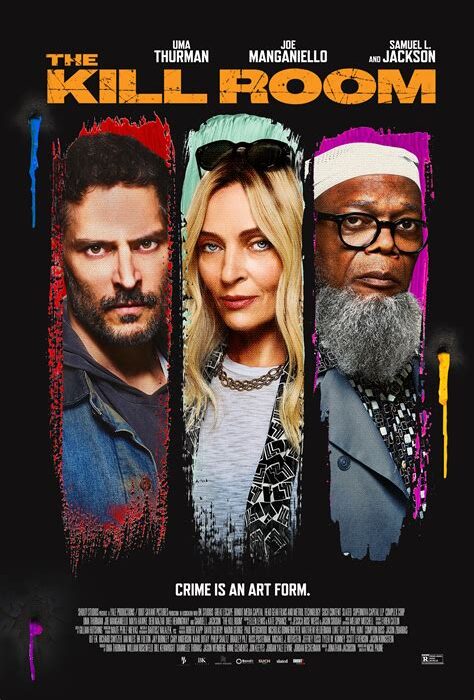*An Ode to One-Time Usable Plastic Bags*
—
**Act I: The Gallery of Gilded Guile**
In this celluloid cathedral, where chiaroscuro cavorts with clandestine commerce, we find our protagonist, **Patrice** (played by the ineffable **Uma Thurman**), swathed in existential ennui. Her eyes—two opalescent orbs—dart like startled starlings across the gallery walls. Behold! The masterpieces, each a cryptic codex of tax evasion and avant-garde absurdity. The room itself? A Rubik’s Cube of secrets, where the air hums with the scent of laundered lucre. And the lighting? A chiaroscuro tango—half truth, half lie—like a Picasso caught in a tempest.
**Reggie** (the dashing **Joe Manganiello**), our hitman-cum-avant-garde virtuoso, pirouettes through this plastic-bag-laden labyrinth. His weapon of choice? Not a Glock, but a one-time usable plastic bag. Yes, dear connoisseurs, he brandishes it like a Renaissance sculptor chiseling David’s derrière. Each crinkle, a metaphor for the human condition: fragile, yet suffocatingly persistent.
—
**Act II: The Banalities of Blood and Baffling DNA**
Ah, the blood! It courses through the narrative like a crimson river, carrying secrets, sins, and strands of DNA. Whose blood? The gallery’s? The artist’s? The curator’s? Alas, we know not, for it swirls like a Jackson Pollock on a merry-go-round. And the police—those misplaced Warhols in a Renaissance salon—they loiter, unexplained and uninvited. Are they guardians of justice or mere gallery-goers, lost in the labyrinth of their own incompetence? We ponder, dear audience, as the plot meanders like a tipsy art critic at a vernissage.
—
**Act III: The Pretentious Pastiche and the Wannabe Mafia Boss**
Enter the pièce de résistance: the wannabe Mafia boss, a caricature of clichés, clad in pinstripes and hubris. His monologue? A symphony of spaghetti code, a fugue of faux menace. He pontificates on plastic bags, their transience akin to life’s ephemeral dance. “One-time use,” he intones, “like love, like art, like my ill-fated capos.” His metaphors? As strained as a corseted canvas.
—
**Epilogue: The Canvas Unfurled, Critics Confounded**
And so, the curtain descends—a velvet shroud on this cinematic charade. The pros? Ah, they shimmer like a Rothko at dawn: creative chutzpah, a plot that pirouettes on the precipice of profundity, and an ending that flirts with the sublime. The cons? Alas, the pacing—slower than a snail’s sonnet, the police—more cryptic than a Dada manifesto, and the blood—well, it’s a DNA-laden Rorschach test.
In sum, “The Kill Room” is a postmodern pastiche, a meta-mélange, a plastic-bag-laden bananarama of bewilderment. Watch it, dear cineastes, with eyes wide as saucers and minds twisted as Möbius strips. For in this room of kills, art imitates life, life imitates art, and plastic bags? They just cling to existence, revealing the absurdity beneath.
6/10

